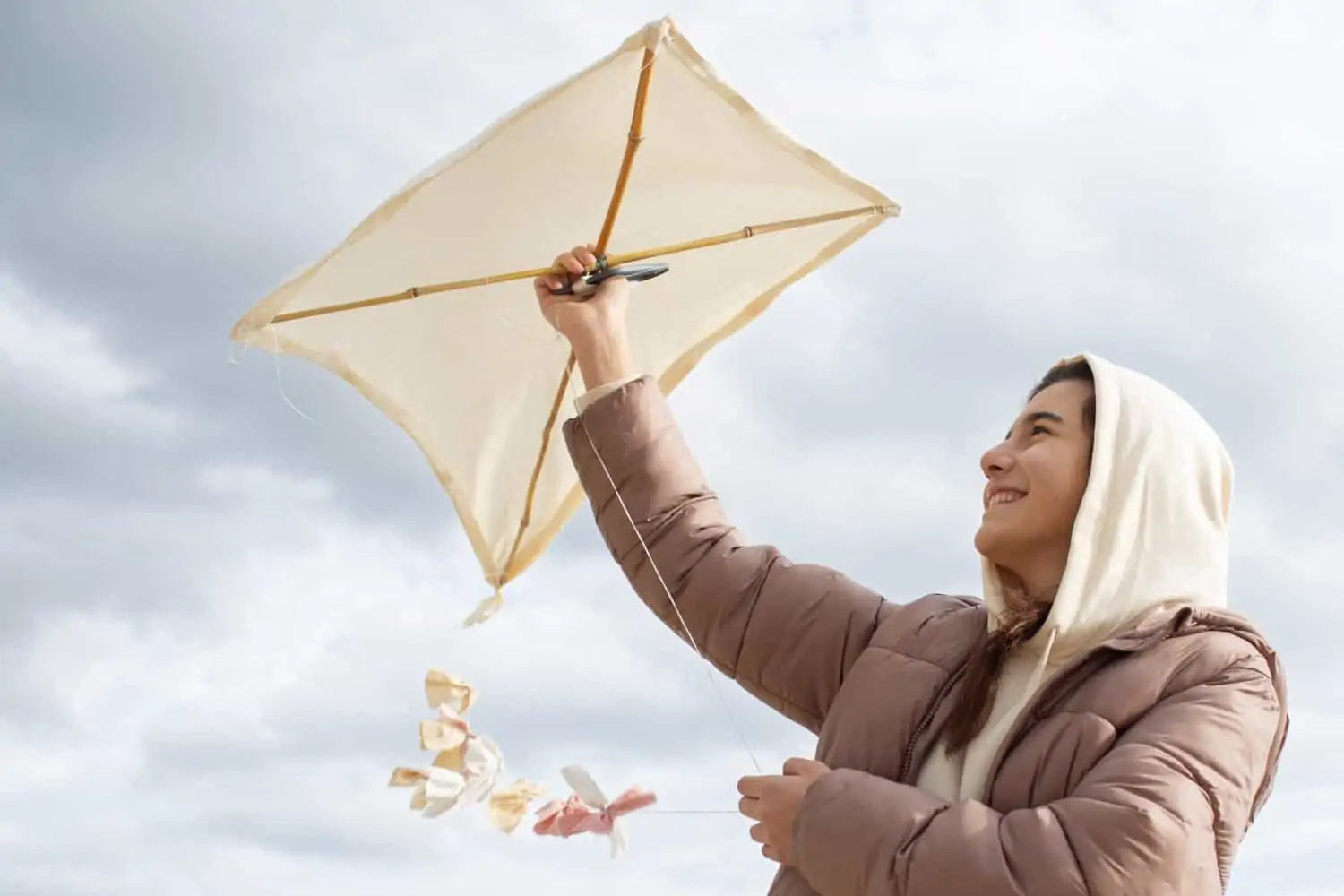Whether it is for International Kite Day or just to have in the house and be able to play around with on any day, making a kite at home can be easy yet very rewarding. Plus, it is a great idea for a fun activity to do with family and friends.
What You Will Need
You have a few different options to choose from with regards to what you make your kite out of. But this is one of the things that makes kite making so great because, with a little bit of imagination, you probably won’t even need to buy anything!
For the Frame
Two straight pieces of bamboo or dowel sticks. One should be approximately 60 cm long and the other approximately 50 cm. Admittedly most straight stick-like materials will work here. It just needs to be relatively strong but still light. If you want to make a larger or smaller kite, you can adjust the length of the sticks. Just make sure the horizontal stick is at least 10 cm shorter than the vertical stick.
You will also need at least three meters of string to make the borders of your frame. As well as some glue for securing it and scissors for cutting.
For the Sail
Here, you should think light yet relatively durable as well. A light fabric would work well, however, my favourite idea so far has been to use a large white bin bag. It is durable while also easy to handle, and you can even draw designs onto the plastic. Your sail will need to be about 100 cm wide.
For the Flying Line
Your line can be from the same string you used to make the frame. You will need at least 60cm of line.
What to Do
Making the Frame
- Make a cross shape with your sticks by placing the shorter one perpendicular to the long one about two-thirds of the way up.
- Attach the 2 sticks together with string and glue. First, wrap the string twice around the two sticks in the middle where they cross paths. Then, tie the string with a small knot, trim off the excess string, and add a dab of super glue.
- Make sure the sticks form a right angle to each other so they make a neat, straight cross. Then I would also add some glue between the sticks for extra security.
- Next, use your scissors to create horizontal notches at the end of each stick. Make them deep enough for a few layers of string to hook inside of them. (If you are using dowel with thin string, you could alternatively drill little holes in the sticks and thread the string through).
- Now take your string and loop it around the top notch of the frame. Wrap it once or twice before pulling it to the next stick end and wrapping it around that notch. Continue until on to the next two stick ends before finishing back at the top notch. Here you will finish of your string border by wrapping it a couple more times around the top notch and then making a little knot with a blob of glue. Cut off any excess string.
- Double-check that the string is taut but not too tight. The string will help the frame retain its shape as you fly your kite.
Making the Sail
- Spread the material you’re using for the sail onto a flat surface. Then, lay your frame on top and in the centre of the sail material.
- Outline your frame onto the sail with a ruler. You should end up with a diamond shape drawn onto your sail material.
- Then cut out the diamond BUT make sure to cut about five centimeters wider than your drawn frame. This excess strip of either side will be folded over the string almost like a hem in order to attach the kite to the frame.
- Now, place your frame back onto the sail and fold the extra edge of the material over the frame and string. Then glue and tape it down, Making sure that the sails sits tightly over the frame.
Attaching the Line
- Poke a hole right above where the two sticks of your frame meet. The hole should be small but still big enough to fit your string through.
- Then, pull one end of the string through the hole and tie it tightly around the cross point.
- For extra stability in the air, you may want to repeat this at two or three more points. One on either end of the horizontal stick, and maybe one on the end of the top stick. Then tie these extra bits of string to your main line a bit further down from where it attaches to the sail. Cut off the excess so that you are left with just the main string as your flying line.
- The remaining bit of flying line string can be left to hang loose. Or you can get creative with a reel of some sort to wrap it around.
At this point, you also have the option of attaching a fun tail. For a kite of the suggested size, consider something about one and a half meters long. You can use the same material used for the sail or something else. Something with a little more weight to it such as cloth or ribbon pieces will help the tail stay balanced and ensure the kite flies straight.
